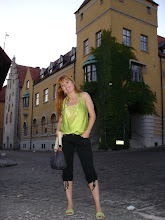

Street area between Jingshan and Beihai Parks


Men hanging around and playing a Chinese board game
Beihai Park is located west of Jingshan Park and has a history of nearly 1000 years. It has existed throughout the Liao, Jin, Yuan, Ming and Qing Dynasties. Beihai was first built in 938 A.D. during the Emperor Huitong of Liao Dynasty and in the 12th century improved into an imperial summer palace. In the second half of the 13th century, Kublai Kahn – a name recognized by most Westerners thanks to the Marco Polo travels – took Beihai as its center to establish the capital of the Yuan Dynasty in Beijing. Beihai means “the north sea” in Chinese and the park actually contains a large, artificial lake with Qionghua Island in the center of it. In1267, Kublai Khan had an imperial city called Dadu built around the Qionghua Island. He called the island Longevity Hill, and the lake around it Taiyechi.
The park is huge and there are many walkways through it. There’s a path next to the water around the whole lake, so I strolled around it for a while, passing tourist boats for rental and some restaurant or teahouse overlooking the lake. It was getting windy and cloudy and the big lake really behaved like the North Sea, with big waves rippling the surface and making the tiny, colorful tourist dinghies pull their mooring ropes.
By the northern shore of Qiong Island, at the foot of Longevity Hill, there is a palace-like, lake-side building with a curved walkway “corridor” along the waterfront with colorful pillars, beautiful wall paintings and red lanterns lighting up the evening stroll.


There is also a very elaborately decorated restaurant with a big, golden, imperial chest at the entrance and various artifacts displayed outside, like imperial China vases and an ancient imperial sedan chair. Waiters and waitresses in traditional costumes dashed in and out of various side doors to the restaurant and kitchen areas, with plates of food that were exquisitely adorned with vegetables and fruit carved into fancy decorations, pastry looking like a swan etc. It looked like a very expensive place and I saw many dressed-up Westerners go there, perhaps for business entertainment. See photos below.






Beautiful wall and ceiling decorations at the lake-side restaurant
After contemplating the imperial ways of living by the lake, I started climbing up the hill and discovered lots of colorful pavilions, chambers, towers and terraces among the rocks, some Taihu Lake stones apparently moved here during the Jin Dynasty from Genyue Garden in Bianliang (capital of the North Song Dynasty in 990-1127), ancient trees and pathways.
After contemplating the imperial ways of living by the lake, I started climbing up the hill and discovered lots of colorful pavilions, chambers, towers and terraces among the rocks, some Taihu Lake stones apparently moved here during the Jin Dynasty from Genyue Garden in Bianliang (capital of the North Song Dynasty in 990-1127), ancient trees and pathways.



Ceiling details in pavilion
At the top of the hill on the Qionghua Dao (or ‘Jade Flowery Islet’) in Beihai Park, the Tibetan style White Pagoda (Baita) Temple is the landmark visible from miles away. It’s an almost 36 m tall Buddhist temple constructed on the former site of the Palace in the Moon where Kublai Khan received Marco Polo. I arrived after closing hours so unfortunately I missed the thousands of Buddha statues that are apparently on display in the temple.
 Baita – The White Pagoda
Baita – The White Pagoda
It was getting really dark at 8:30-9 pm and since I couldn’t enter the temple I looked at the view of Beijing and the lake from the terrace at the hilltop. The evening sky was very pretty with a pink sunset breaking up the heavy clouds.
At the top of the hill on the Qionghua Dao (or ‘Jade Flowery Islet’) in Beihai Park, the Tibetan style White Pagoda (Baita) Temple is the landmark visible from miles away. It’s an almost 36 m tall Buddhist temple constructed on the former site of the Palace in the Moon where Kublai Khan received Marco Polo. I arrived after closing hours so unfortunately I missed the thousands of Buddha statues that are apparently on display in the temple.
 Baita – The White Pagoda
Baita – The White PagodaIt was getting really dark at 8:30-9 pm and since I couldn’t enter the temple I looked at the view of Beijing and the lake from the terrace at the hilltop. The evening sky was very pretty with a pink sunset breaking up the heavy clouds.

View over Beijing and the Taiyechi lake from the top of the Qiong Island
Beihai Park is probably one of the fondest takeaways from my trip to Beijing. Located in the middle of a modern city, this multi-faceted but harmonic imperial garden showcased the powerful elements of nature and history in a beautiful mix. I left with an impression that I could return many times to let the winds by Taiyechi lake wash away contemporary problems and to discover new historic treasures every time.
Beihai Park is probably one of the fondest takeaways from my trip to Beijing. Located in the middle of a modern city, this multi-faceted but harmonic imperial garden showcased the powerful elements of nature and history in a beautiful mix. I left with an impression that I could return many times to let the winds by Taiyechi lake wash away contemporary problems and to discover new historic treasures every time.



No comments:
Post a Comment